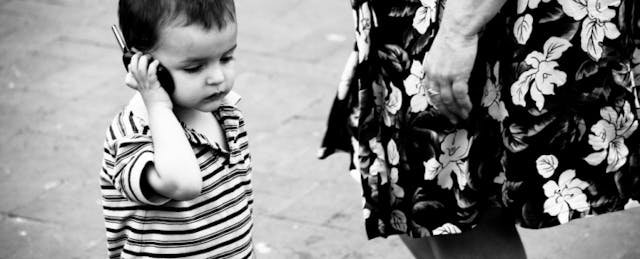Recently we had a holiday, or at least it felt like one. Apple released its new operating system. The students knew it was being released at 1pm EDT which was during their lunch, so many ate early and were stationed in various WiFi nodes to "try to get the best signal" to download the new update. At 12:57 some person in California hit the switch three minutes early and you could hear the noise ripple through the building.
These students are already connected. But there are students who are not.
The most obviously disconnected students don't have phones or WiFi. They don't have the technology in their hands because they don't have it at home. Many are just glad to get a meal and having a cell phone is not high on the priority list for their family.
But being connected isn’t just for socializing; it’s a life skill. When untrained students get online, they treat academic writing online as if it were social media. They write sloppily and don't think of hyperlinking. If they do, it is often a long pasted link instead of a contextual link. In this connected world, there are invisibly disconnected kids, disconnected from the knowledge they need to be successful.
As educators we should care about the way institutions discourage connections through social media--and even the hidden forms disconnection can take. The obvious hurdles include:
- Students who attend schools that don't allow teachers to connect kids to online global projects and resources;
- Students who attend schools that block conversations with the world from happening at all (Skype, Facetime, Oovoo, Google Hangout);
But there are subtleties that cause just as many problems:
- Students who might have Twitter but don't know how a hashtag works or how to use Twitter to find and ask questions of an author;
- Students who don't know how to blog and have to do so when they get to college.
Some say that connecting is a civil right but I also think that they need to know the essential skills for connecting. Otherwise, we’re handing them the keys to the car without teaching them how to drive.
Essential Know-How for the Well-Connected Student
ESSENTIAL #1: A connected author
Students must be able to write and communicate in online spaces in contextually appropriate ways. For example, first person is fine in a blog post, but in an information source like Wikipedia, third person is the norm. Do students understand this context? Blogging, writing wikis, sharing on Twitter, creating websites, publishing work and protecting privacy are all part of this online world.
ESSENTIAL #2: A connected publisher
Students should have efolios and personal websites full of great academic work. Why just share the personal and skip the great professional content students create? When students turn 18, [if they want to have a public space], they should consider creating a public space where they can add their full name and a ready-made portfolio full of professional-quality work to show the world. This work should reflect their own talents and strengths. By ignoring the professional side of student’s lives--the academics--we’re encouraging students to share the more private side of their lives with a world Googling and ogling their every move. That’s not a digital footprint; it’s a digital tattoo. Schools have a responsibility to help students build this body of work, rather than just quietly deleting student work off servers every summer.
ESSENTIAL #3: A connected conversationalist
Students need a voice and to know how to interject and extend a conversation. Zak at Student Voice ( #stuvoice hashtag) is a great example of a young man along with his friends, who has found a voice and begun to change his world. They are speaking out about education; many, both students and adults, are listening. I teach my students how to find hashtags, write Tweets to get responses and to create a personal branding strategy. Students that don't learn these valuable skills might be able to sign up for Twitter but engaging in conversation will take some time to learn.
ESSENTIAL #4: A strategic disconnector
We are not in the matrix. We are human beings, not human “doings.” Designers are good at creating highly addictive platforms because that is how they make money. We must help this generation have the discipline to put down their phones strategically to have a well-rounded life: while driving, while dining with important people in their lives, while studying. Do students know how to turn off notifications on their personal devices so they can get work done? Do they know how to get into a “flow state” and how to remain disconnected long enough to stay in one? Procrastination is easier than ever. It takes the form of keeping your smartphone on with notifications blaring full blast. While connecting is important, disconnecting is essential.
ESSENTIAL #5: A curious, lifelong pursuer of ingenious solutions
Building a PLN (personal learning network) is a great way to jumpstart lifelong learning. For society and students to succeed, they must be curious about those passions they hold dear. They must pursue learning and solutions their whole lives. They also must be inventors. With the emerging "Internet of things" and ability to program everything from light bulbs to mood music upon us, the Maker movement/ genius hour/ 20% time/ personalization of learning initiatives are vital to help students create solutions of their own. Students don't need to buy apps, they need to create them.
We educators must shift this generation from being consumers to being creators. This isn't going to happen if they spend all of their waking school hours bubbling in Scantron sheets. We must make time for inventing and programming and using technology. Technology isn't vocational; it is college prep, vocational and life skills, all rolled into one. And it’s everywhere: not just in every classroom or in every school.


